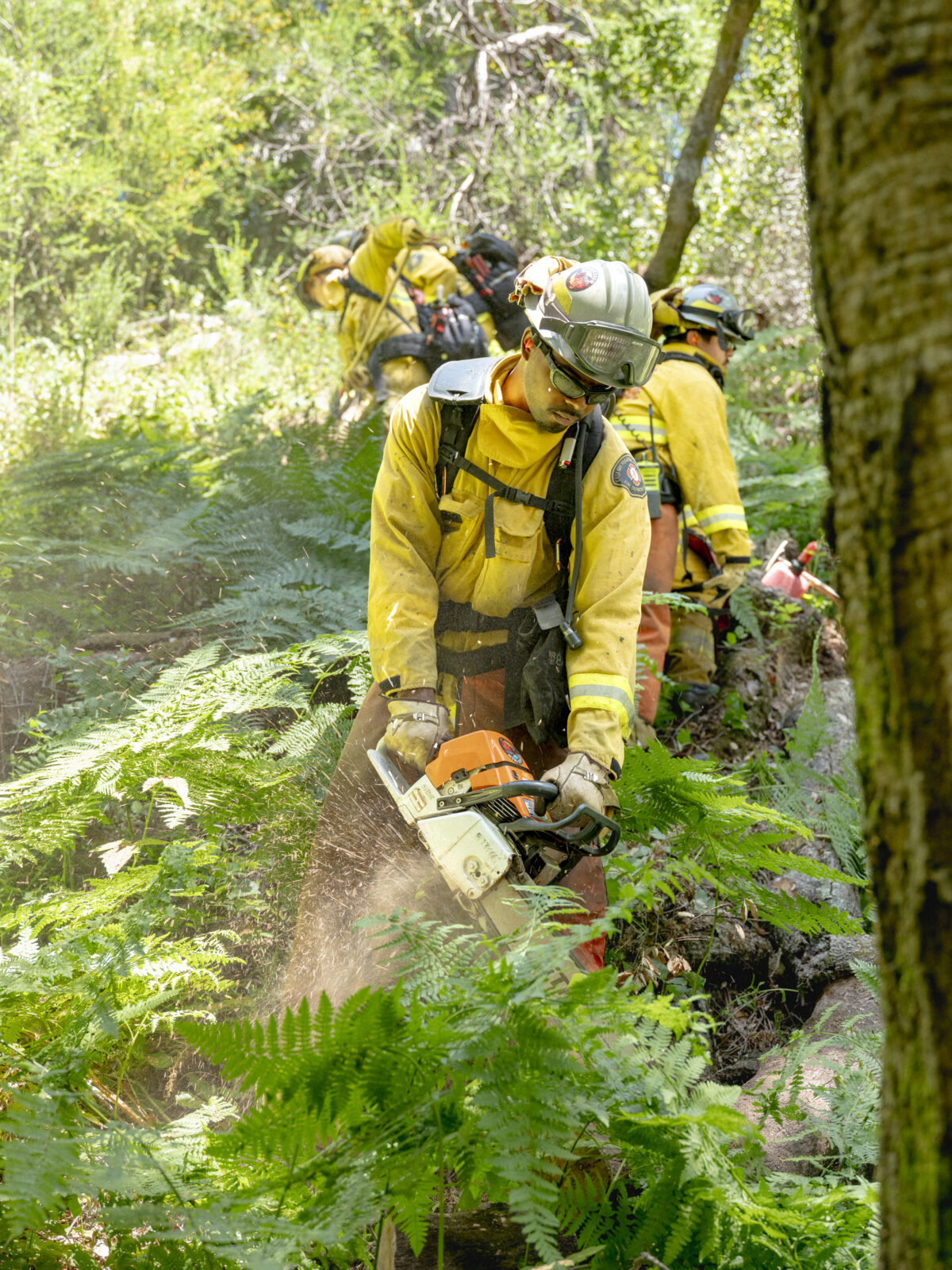On a fine morning in late December, East Bay Regional Park District naturalist Kevin Dixon and a small group of nature lovers are out birding at Martin Luther King Jr. Regional Shoreline in Alameda. Dixon takes the opportunity to talk about climate change—specifically, how it threatens wetland ecosystems and shoreline parks and trails, including the one surrounding us.
As a large flock of willets lands on the Arrowhead Marsh pier, Dixon explains that places like this will be increasingly submerged as sea levels rise. That means that shorebirds, including the willets, will lose access to the coastal mudflats they depend on for feeding in the winter.
“Creatures in the marsh used to be able to migrate to upland areas at high tide, but everything surrounding the marsh is built up and channeled now,” Dixon says. “At high tide, the birds don’t have anywhere else to go.”
King tides—unusually high tides that occur during some new or full moons—are a preview of what low-lying coastal areas will experience as sea levels rise. When king tides nearly inundated Doolittle Drive on the park’s southern edge in 2022, it was the kind of scene shoreline visitors can expect to see more often in the future. The park district anticipates that if sea levels rise one foot, nearly half of the trail system at Martin Luther King Jr. Regional Shoreline could be underwater—and not only during the king tides that occur three or four times a year.
Sign up today!

As the district marks its 90th anniversary this year, king tides, like recent wildfires, offer hints for how its scientists and planners can prepare for the changing climate in the century ahead. The stakes are high: because the district manages so much land across the East Bay, the effects of its decisions now will ripple far beyond park boundaries in the future.
“We are a major landowner within the East Bay, and as a result of that we’re on the front lines of mitigating climate change,” says Brian Holt, the district’s chief of planning, trails, and geographic information systems. “Whether it’s how we manage our forest or grassland, or how we respond to sea level rise along the shorelines, we’re the first line of defense for a lot of East Bay communities and neighborhoods. We play a key role in the adaptation strategy for the East Bay region.”
Taking on water
From Oakley on the Sacramento–San Joaquin Delta to Fremont on the south end of the San Francisco Bay, the district manages 16 different shoreline parks. In the face of rising seas, these properties are a bulwark for the commercial and industrial areas they border, and for densely populated neighborhoods built on filled-in Bay wetlands. At Martin Luther King Jr. Regional Shoreline, for example, 748 acres of protected parkland are hemmed in by Oakland airport, Hegenberger Road, and office complexes.
“The history of the East Bay is that it’s a very industrialized shoreline,” Holt says. “The Bay Trail is important recreational infrastructure and an active transportation facility, but it’s also protection for infrastructure that was developed a century or more ago: rail lines, freeways, wastewater facilities, and landfills.”
It isn’t only human habitat at risk from rising seas. As more marshy shoreline areas are submerged, species such as the endangered Ridgway’s rail and salt marsh harvest mouse will lose access to the intertidal areas they rely on for escape at high tide. Already, the habitat they need—dense stands of pickleweed adjacent to upland, salt-tolerant vegetation—is becoming increasingly rare.
With 55 miles of trail along the water to consider, district planners needed to identify the most vulnerable sites in the park system and home in on those where climate adaptations have the greatest chance of success. In 2021, they published the Risk Assessment and Adaptation Prioritization Plan for the San Francisco Bay Trail, outlining how the district can work with partners to safeguard the shoreline.
In the past, the strategy often focused on armoring—for example, building sea walls of stone or concrete to resist storm surges. Now, the district aims to manage water with the help of natural systems. Restoring oyster reefs and aquatic vegetation close to shore slows incoming water, while expanding beaches, marshes, and mudflats absorbs it. Reconnecting creeks to the wetlands that surround the Bay dissipates and drains runoff to help prevent flooding. Sometimes called “green infrastructure” or “nature-based adaptation,” strategies like these incorporate habitat into flood-control measures: for example, the gently sloping design of horizontal levees is more hospitable to plants and wildlife than vertical barriers.
The park district has flagged Martin Luther King Jr. Regional Shoreline as one of the sites most at risk from sea level rise, along with Alameda Point (home of the future Northwest Territories Regional Shoreline) and the regional shoreline parks at Coyote Hills and Hayward. At Hayward Regional Shoreline, design and permitting for marsh restoration is already underway—from creating a new alignment for the Bay Trail to restoring upland habitat that will allow the marsh to “migrate” as sea levels rise.
“Marshes are able to withstand the burden of the king tides,” says Ana M. Alvarez, the district’s deputy general manager. “They slow down the rise of Bay waters and prevent flooding while building better habitats for wildlife, cleaning the water, and storing carbon.”
Elsewhere, earlier investments are already paying off. Chief planner Brian Holt points to Dotson Family Marsh at Point Pinole Regional Shoreline, completed in 2017, as a model for future shoreline restorations. There, the district acquired land and cleaned up decades’ worth of debris and hazardous material along the heavily industrialized waterfront in order to reconnect historic wetlands to the Bay.
“[The plan] incorporated the Bay Trail, so it provided a new area of public access,” says planning chief Holt. “We ended up with a project that’s not just a sea wall or hard infrastructure, but that takes a former industrial site and makes it something that’s better for people, better for habitat, and more resilient to climate change.”
Fuel from the fire
Miles from lowland marshes, on the wooded ridgelines that frame the Bay, the threat that most concerns the district isn’t flooding—it’s fire. Patrick McIntyre, a park district fire captain dedicated full time to fuels management, says climate change is increasing the risk that a wildfire originating in the parks could make the jump into surrounding neighborhoods. “It’s the culmination of fire suppression, nonnative species, drought-related stress on native species, and the abnormally large volumes of available fuels in areas of our parks.”
Three factors control the behavior and intensity of wildfires— topography, weather, and fuel. Because it can’t control topography or weather, the district’s climate mitigation strategy focuses on the fuels that feed fires: overgrowth of understory brush and nonnative species, as well as the estimated 1,500 acres of trees currently dead or dying from drought or fungal diseases across the regional parks.
The district has worked to manage fuels in the East Bay long before climate change was top of mind for park managers. Every year, maintenance crews—with help from grazing goats and cattle—thin vegetation on more than 1,000 acres of grassland, brush and scrub, native oak woodland, and nonnative pine and eucalyptus groves.
But these fuel reduction efforts intensified in 2018, when the district cleared the last of the regulatory hurdles required to implement its Wildfire Hazard Reduction and Resource Management Plan. One key component is the Grizzly Peak Strategic Fuel Break—a buffer zone spanning 54 miles of roadways, trails, and sidewalks. The zone begins at Wildcat Canyon Road in Tilden Regional Park and runs along Grizzly Peak Boulevard, then south through East Bay Municipal Utility District lands to Claremont Canyon Regional Park.
While some firebreaks involve the removal of nearly everything growing on the land, a “shaded fuel break” leaves deliberately selected plants intact. “A shaded fuel break is a way to reduce the fire hazard in an area while preserving and protecting more resilient native vegetation that’s already in place,” McIntyre explains. The goal is to prevent a fire that starts in the grass below from “laddering up” and igniting tree crowns.
Park-goers can observe the approach in progress on the steep slopes above Canon Drive, near the entrance to Tilden Regional Park. Here, native oaks and nonnative red gum eucalyptus have been pruned to eight to 10 feet above the ground and carefully thinned, with brush and small trees removed from the understory. Space is ample, while other areas along Grizzly Peak Boulevard are so thick with brush it’s difficult to see or walk through.


Before and after. Over the course of several years, crews have worked to reduce fuel loads in this area of Tilden Regional Park, along Golf Course Road. On October 9, 2017—as the Nunn and Tubbs fires raged in Napa and Sonoma counties—that work paid off: park district firefighters were able to quickly extinguish an early-morning fire that started in this location, preventing spread to nearby homes. (Photo courtesy of East Bay Regional Park District)
More than 80 percent of the planned fuel break traverses zones classified as “very high fire severity risk”—the state’s top designation for wildfire danger. It includes major and minor roads along the ridgeline, which will be cleared of trees and brush that could impede firefighters’ access during an emergency.
McIntyre says the park district’s crews work hard to create shaded fuel breaks that maintain ecological diversity and aesthetic value while helping to protect communities near parks from fire. “We’re actually providing for more spacing and resources to maintain the needs of those trees, which are still working to provide shade and retain moisture,” he says. “Restorative management does cost more, but it’s a better approach.”
Funding the future
Preparing the parks and protecting the public from rising seas and more frequent fire takes not only long-term planning, but long-term funding. District climate projects also require extra coordination with other landowners and agencies, especially on sites—like Grizzly Peak—where many jurisdictions overlap.
The park district’s climate-resilience work is funded by general maintenance funds as well as a range of regional and state initiatives, including the Land and Water Conservation Fund, Proposition 68 (the California Drought, Water, Parks, Climate, Coastal Protection, and Outdoor Access for All Act of 2018), the California Coastal Commission’s Climate Ready Program, San Francisco Bay Restoration Authority Measure AA, and Measures WW and FF.

“The park district is leveraging our work and available resources to obtain additional funding for climate resiliency,” says Sabrina Landreth, the park district’s general manager. “We work closely with our partners at the state and national level to prepare for sea level rise, protect habitat, and create climate-resilient parks.”
Climate Adaptation Across Parks
Fire and sea level rise aren’t the only challenges on district planners’ minds. “Increasingly, we’re finding that climate resilience is a part of everything that we do,” says Chief of Stewardship Matt Graul.
Protecting biodiversity: District lands support 500 vertebrates and 1,550 species of plants—including 15 endangered species, 17 threatened species, and 27 fully protected species or species of special concern.
Saving—and generating—energy: About 500 different projects—primarily lighting replacements—have helped the parks reduce their overall energy consumption. The district became “energy neutral” in 2017 with the debut of a 1.2-megawatt solar array in the parking lot of Shadow Cliffs Regional Recreation Area in Pleasanton: the array offsets all of the district’s annual electricity usage.
Reducing waste: The district is adding water-bottle filling stations in parks, and rolling out three-stream sorting stations for compost, recycling, and trash.
Storing carbon: A 2016 study reported that park district lands such as wetlands, grasslands, and forests store about 300,000 metric tons of carbon dioxide equivalents. The district’s recent land acquisitions—like Finley Road Ranch, adjacent to Mount Diablo State Park, and Thurgood Marshall Regional Park—add to the list of protected places keeping carbon out of the atmosphere.
Preparing for extreme weather: When ground becomes hardened by drought and compaction, it’s less able to absorb rainwater—so extreme weather events like atmospheric rivers can cause flooding, erosion, and mudslides. In 2018, Alameda and Contra Costa county voters passed Measure FF to support the district’s flood control projects.
Burning clean: To dispose of the excess vegetation gathered in fuel reduction efforts, the district has begun using a machine called a carbonator. This clean-burning incinerator creates biochar, a soil amendment that sequesters carbon rather than releasing it into the atmosphere.
This article was paid for and reviewed by the East Bay Regional Park District.





